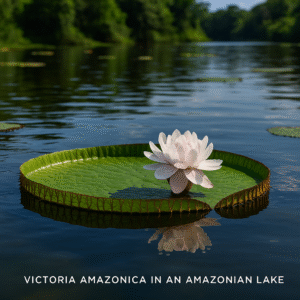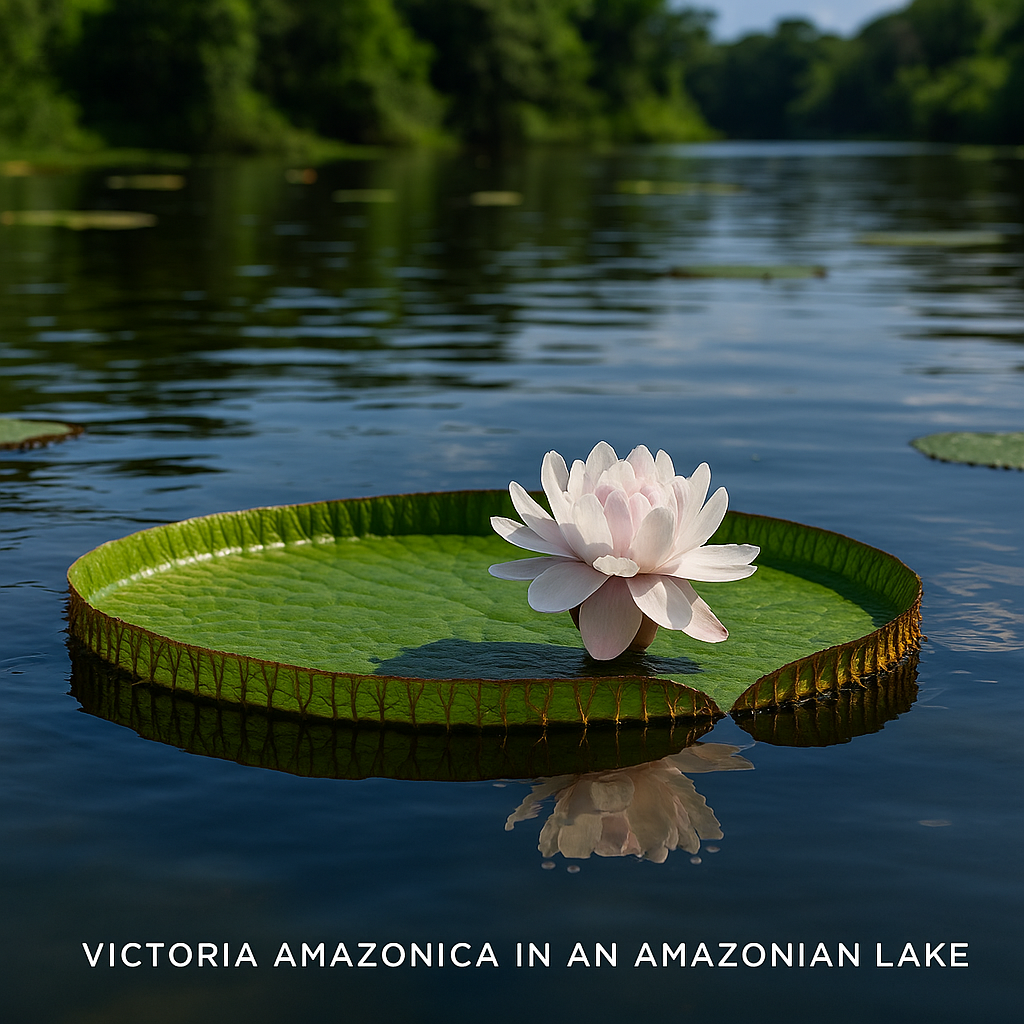The Victoria amazonica is one of the most iconic aquatic plants in Brazil and a true symbol of Amazonian biodiversity. Its massive floating leaves, which can reach up to three meters (10 feet) in diameter, captivate scientists, tourists, and nature lovers around the world.
In this article, you’ll discover everything about the Victoria amazonica: its characteristics, natural habitat, ecological importance, fascinating curiosities, and even tips for growing it in controlled environments.
Origin and Distribution
The Victoria amazonica is native to the Amazon region, found mainly in calm rivers and lakes throughout the Amazon Basin. This includes areas in Brazil, Peru, Colombia, Bolivia, and Venezuela. Its scientific name honors Queen Victoria of the United Kingdom, after the plant was first introduced to Europe in the 19th century.
Characteristics of Victoria Amazonica
The leaves of Victoria amazonica are circular, flat, and float on the water surface, with raised edges that prevent water from flooding their tops. The underside of the leaf is supported by a dense network of ribs and covered with sharp spines, which help support the leaf and protect it from aquatic predators.
The plant produces large, fragrant flowers that only bloom at night. The flower is white on the first night, then turns pink or lilac the second night before closing and sinking underwater. This process is part of the plant’s unique pollination system.
Life Cycle and Pollination
Pollination of the Victoria amazonica is performed by specific beetles native to the Amazon. These beetles are attracted by the flower’s sweet scent and become trapped inside the white flower during the first night. When released the next morning, they are covered in pollen and carry it to another flower that has changed color, completing the pollination process.
After fertilization, the flower sinks below the surface and develops into a round fruit filled with seeds. These seeds will eventually germinate along riverbanks or at the bottom of calm waters.
Ecological Importance
Victoria amazonica plays a vital role in aquatic ecosystems:
- Natural habitat: Its large leaves offer shade and shelter to small fish, amphibians, and aquatic insects.
- Temperature control: The shade from the leaves helps reduce evaporation and regulate the surface temperature of the water.
- Water purification: Like other aquatic plants, it contributes to filtering waste and oxygenating the environment.
Besides its ecological function, Victoria amazonica is also a cultural and symbolic treasure, inspiring indigenous legends, artistic works, and educational programs.
The Legend of Victoria Amazonica
Among indigenous peoples of the Amazon, Victoria amazonica is tied to a beautiful legend. It tells the story of Naiá, a young girl enchanted by the moon. Dreaming of touching it, she leaped into a river after seeing the moon’s reflection. Instead of drowning, she was transformed into a majestic plant with the largest leaves in the world and a flower as white as the moon itself.
This tale enhances the cultural charm of Victoria amazonica and solidifies its role as a symbol of Brazilian flora.
Growing in Controlled Environments
Though native to the Amazon, Victoria amazonica can be grown in botanical gardens, greenhouses, or ornamental ponds, provided the right conditions are met. Here are the main requirements:
- Large, shallow space: The pond or tank should be wide and shallow (about 50 to 80 cm deep).
- Hot, humid climate: Ideal temperature ranges from 25°C to 30°C (77°F to 86°F).
- Full sunlight: At least 6 hours of direct sunlight per day is essential.
- Calm, clean water: No strong currents and periodic water renewal.
Cultivating this plant is a challenge but offers an extraordinary visual reward.
Fun Facts About Victoria Amazonica
- A single leaf of Victoria amazonica can support up to 40 kg (88 lbs), as long as the weight is evenly distributed.
- The plant has an extremely fast growth rate, reaching adult size in just a few weeks.
- Its seeds are edible and were traditionally consumed by indigenous tribes.
- In Manaus, Brazil, there’s an annual Victoria Amazonica Festival, celebrating its ecological and cultural value.
Conclusion
Victoria amazonica is a true natural wonder of Brazil. Beyond its exotic beauty, it plays a fundamental role in the ecology of the Amazon and embodies cultural heritage through legends and symbolism. With proper care, it’s possible to grow this species in controlled environments, making it not only a centerpiece of education and conservation but also a symbol of our connection with the natural world.
Uncover the story behind this aromatic herb cherished in Brazilian culture, from kitchen uses to healing traditions.


